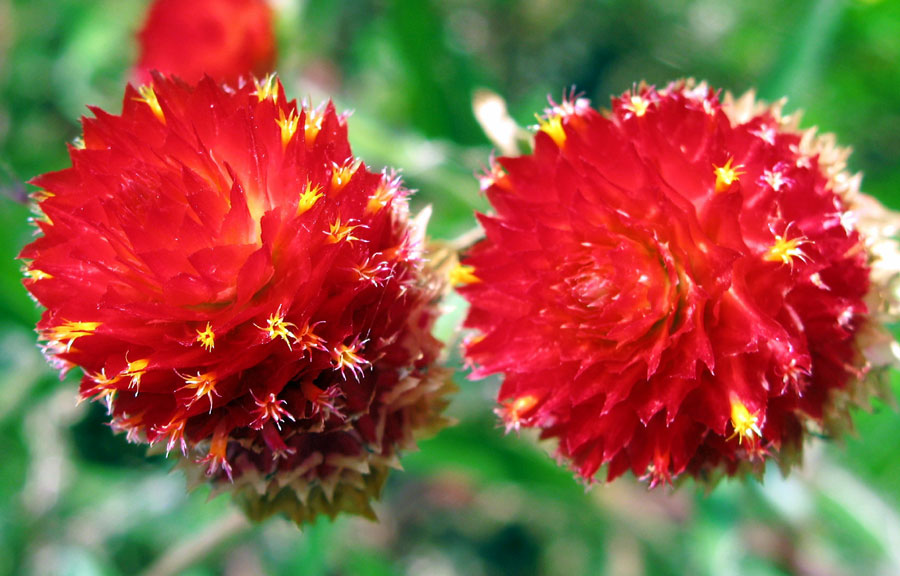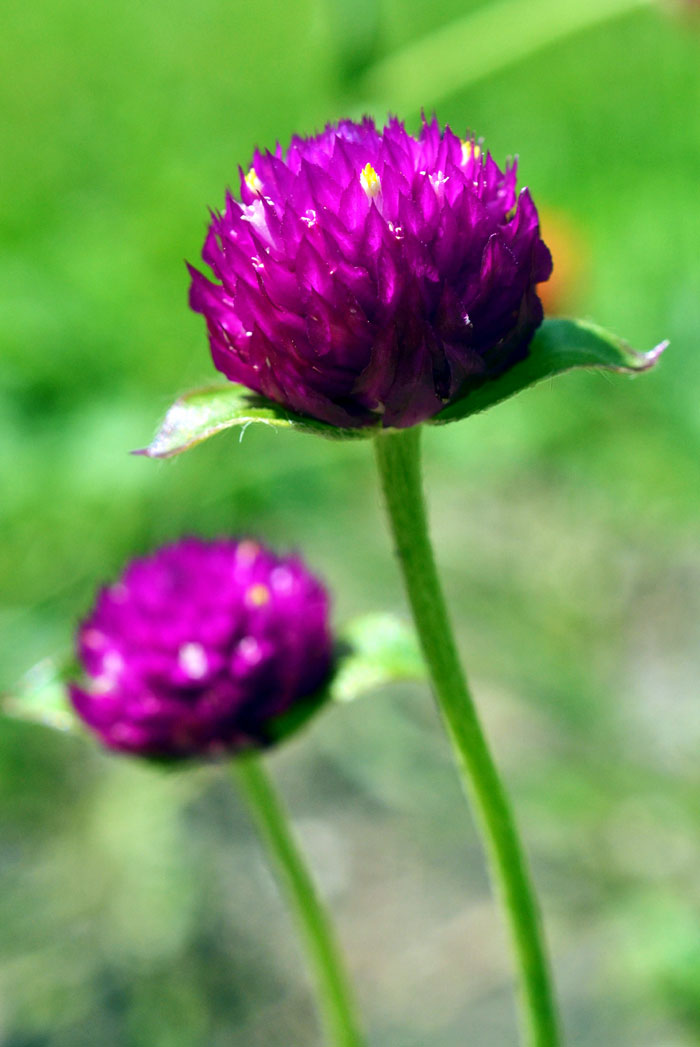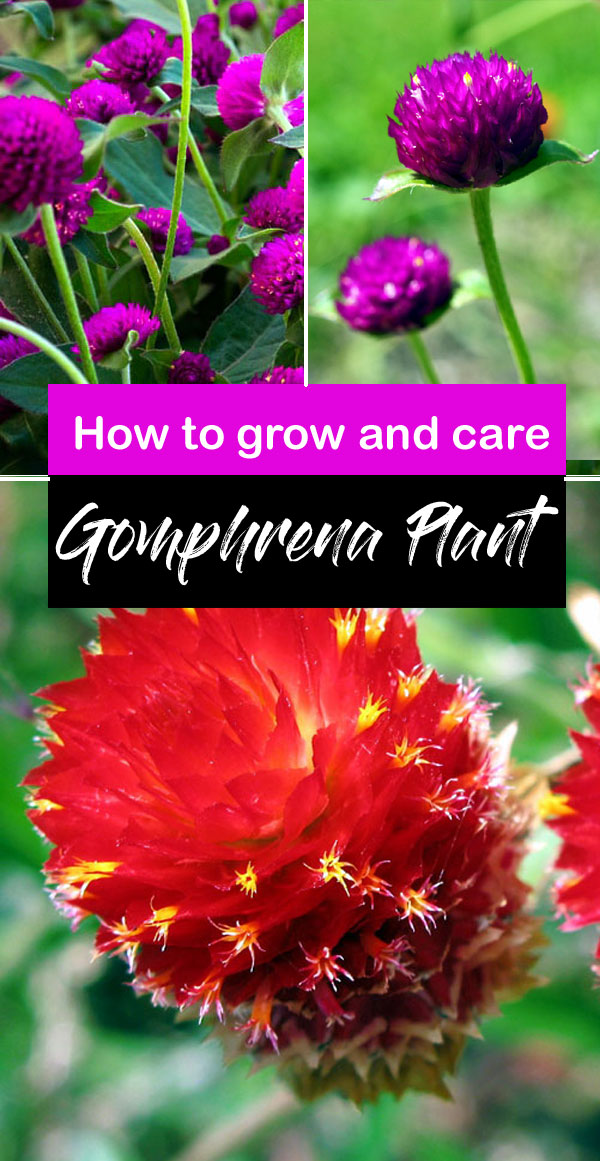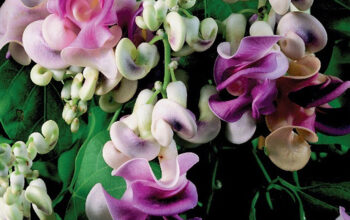Gomphrena Plant (Globe amaranth)
Also known as the globe amaranths, makhmali, bachelor’s buttons, and vadamalli, Gomphrena is a genus of plants from the family Amaranthaceae. Globe amaranth flowers are round-shaped with shades of magenta, orange, red, purple, white, pink, and lilac. The rue flowers that are within the flower heads are small and subtle. It is inhabitant to Central America including regions Panama and Guatemala and is now grown worldwide.
In Nepal, the flower is used to make garlands during bhai tika. The plant has been used in herbal medicine too. In Thailand, the flower is used for making tea which is used for treating baby gripe, cough, and diabetes.
Overview of Globe amaranth
Scientific Name Gomphrena globosa
Common Name Globe amaranth, Gomphrena, Bachelor’s buttons, makhmali. vadamalli flower
Plant Type Flowering plant
Sun Full Sun
Flower color purple, red, orange, white, and lilac.
Soil well-drained
Soil pH 6.1-7.5
Zone 2-11
Growing and caring Gomphrena Plant
- The gomphrena plant blooms constantly all the way through summer and early fall. It is an out-crossing species that can be pollinated by bees, butterflies, and other insects. At maturity, the flowers heads of the plant are about 4 cm long and the plant grows up to 24 inches in height.
- The plant requires very low maintenance and is almost resistant to diseases and pests. You can grow this plant very easily from seeds. To cultivate gomphrena in your garden, wait until the last average frost date for spring has passed before transplanting the seeds.
- For both annual and perennial cultivation, soak the seeds overnight. And, the rate of germination of the seeds is low. Maturity takes place between 85 to 100 days.
- Sow the seed 1/8th of an inch deep and scatter a few every four to six inches and then cover them lightly with soil. Throughout the growing process, cutting flowers inhibits leggy growth and also encourages further blooming.
Sunlight
Plant your gomphrena plant in a location where it receives full sunlight. The plant can tolerate partial shade too, but keeping the plant in sunlight makes for more vibrant blossoms. Keeping the plant in too much shade will make it lanky because of the reach for the sun.
Watering
- Try touching the topsoil, if it feels dry, water the plant. Although the plant-like dry conditions, it is better to water the plant when they are in drought conditions and when they are young. Make sure to always water the plant at ground levels so that the leaves can be avoided from getting wet.
- The plant flourishes well if the watering schedule is kept regular. Watering your gomphrena plant will keep its root zone saturated. Once the plant is mature, do not water the plant more than one inch per week by combining rain and supplement watering.
Soil
- The gomphrena plant does not have a specific soil type, but it is beneficial to plant them in well-draining soil with a pH level of about 5.8 to 6.2. The plant can bloom in heavy clay soil but the height will be somewhat stunted. Alkaline soil conditions are not preferable for the gomphrena plant.
- Keep the soil moisture but make sure not to overdo it, because it can make the sprouts prone to fungal diseases that cause them to flop over and die.
Temperature and humidity
- The best time to grow the gomphrena plant is in the summer season because it is a summer plant. The temperature of the soil should be around 25 degrees Celsius for germinating gomphrena seeds.
- You should sow the gomphrena seeds in early spring or just after the last frost of the early blooming.
- Gomphrena plant has a high tolerance for heat and humidity and thrives best under conditions that are similar to the tropics. The plant loves heat but requires consistent moisture too.
Fertilizer
Before planting your gomphrena, mix a light application of a balanced organic fertilizer into the soil. During midsummer, saturate the plant with a liquid fertilizer to extend bloom time. Fertilize the plant with a balanced, slow-release fertilizer with an N-P-K ratio of 14-14-14 at the time of planting.
Vadamalli flower plants do not require much feeding, so if you mulch the soil with compost it will respond well to that too, and may not require any fertilizing.
It is not compulsory to fertilize the plant, and if you do so, make sure that the nitrogen content is low. Otherwise, the plant will grow lots of leaves but very few flowers.
Read also:
How to grow orchids. Viburnums opulus growing and care tips. How to grow and care for Hoya plants. Growing sage in containers. Growing Summer flower bulbs. Raspberries growing in containers. Okra plants growing and care tips. 10 root vegetables easy to grow. Growing Guduchi at home. Foxtail ferns growing and care tips.
For pin:







